When considering bespoke smart systems, the arguments for switching from hardware-based video management to VMS solutions are convincing. This is highlighted by the fact the majority of manufacturers now offer some form of VMS, and the market share of the leading providers continues to grow. Increasingly, forward-thinking integrators are embracing all that VMS offers. What does VMS software offer to smart solutions?
VMS systems are the solution of choice for forward-thinking integrators, and for a very good reason. The solutions offer a flexible and credible platform which allows the creation of smart, value-added and bespoke systems which meet end users’ needs. They offer a high level of security which can be adapted to address any risk level, and can also add benefits that go beyond security. As a result, the systems offer a genuine and quantifiable return on investment for the customer.
The question some might ask is why, if VMS is so powerful, do NVRs still appear to be so prolific in he industry? The answer is simple: they offer a low cost system for those who are looking for a basic system which records video and offers entry-level functionality.
There are end users who require such systems. Some do so because their integrator hasn’t offered them a smart option and as a result they believe restricted hardware is their only choice. Others are focused solely on the capital cost rather than total cost of ownership and return on investment.
However, as more business and organisations embrace the added value of smart solutions and IoT technology, the arguments for using a VMS become ever stronger, to the point where not specifying one seems almost blinkered.
It should be noted that VMS solutions are not expensive, not complicated to install or use, and are not limited to sites with large camera counts. The vast majority of providers offer solutions which are very cost-effective (and at times free of charge) for small sites. The size of the customer’s business, the number of devices being used and the budget are not barriers to using a VMS over an NVR.
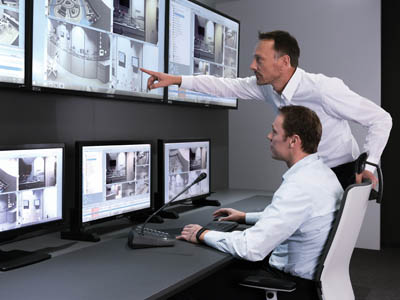
It is important to also realise that VMS solutions are not just for video! The VMS – video management system – tag is slightly misleading, as today’s leading solutions are far more than video management systems.
The leading VMS packages support connection with cameras, video codecs, recording devices, access control, intruder alarm systems (and standalone detectors and sensors of various types), perimeter protection systems, fire detection, safety and building management systems. Specialised areas such as traffic incident detection, business intelligence, asset tracking and process control can also be added by integrators with no need to write code or carry out complex programming.
Increasingly, VMS software also integrates with a host of IoT devices which are ideal for smart solutions. These include – but are not limited to – lighting, audio broadcast, communications, environmental monitoring, digital signage and displays, elevator control, HVAC management, power and energy management, real-time status reporting, vehicle tracking, etc..
The functionality available from a typical VMS goes above and beyond that offered by hardware-based video systems. Because the VMS is effectively software ‘under the bonnet’, this means it is inherently more flexible. Creating a bespoke solution which might be complicated or impossible with a hardware-based system can be achieved with ease via a VMS, often using little more than drop-down menus and simple selection buttons.
VMS solutions do all the things an NVR can do: record, play and display video. That much is expected. However, the software can also offer advanced management of video, whether that be sharing it across a business or organisation, tracking events and incidents, delivering data that makes the business operations more efficient or integrating it with other systems and technologies.
The right choice?
When specifying a VMS, integrators face a growing number of options. VMS systems are provided as software-only or appliance-based on-premise solutions, cloud-based systems and hybrid versions incorporating local and remote elements. Additionally, there are open platform options as well as VMS packages which are limited in terms of support for third party devices.
Pinning down which route to consider is a relatively simple task, if you consider the pros and cons of each approach.
Starting with open platform systems, these will support a wide range of third party devices, usually covering all professional quality manufacturers and devices. The positive of an open platform system is that legacy cameras and other devices will be supported (unless the site has been fitted with obscure, non-branded devices, in which case the best approach will always be to replace with credible devices).
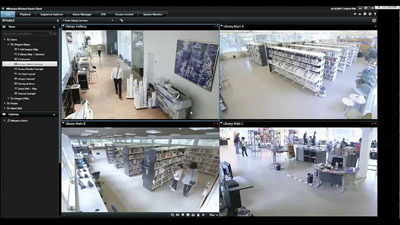 Additionally, because many open platform VMS providers don’t manufacture cameras, companies which do are willing to work with them, often in advance, on forthcoming products. This means that when a manufacturer launches a new camera or range of products, the VMS provider will have already written a driver. This allows support from the day the new products are launched.
Additionally, because many open platform VMS providers don’t manufacture cameras, companies which do are willing to work with them, often in advance, on forthcoming products. This means that when a manufacturer launches a new camera or range of products, the VMS provider will have already written a driver. This allows support from the day the new products are launched.
The downside of many open platform systems is that every device will require a license. However, given the flexibility of the systems, coupled with the certainty that devices will be compatible, makes this small cost one worth bearing.
VMS packages which are not open platform are usually offered by manufacturers who also provide hardware components such as cameras and NVRs. As such, the main goal of the VMS is to supplement their hardware offerings. Typically, such systems will be optimised for use with the manufacturer’s devices, and as such can represent a ‘one brand’ option. Some might claim to support third party devices, but this will often be a few selected partners, or basic operational functionality via ONVIF compliance.
A number of single brand VMS packages will not charge license fees if the manufacturer’s own devices are used, but will for third party cameras. It is important to find out whether a license fee gets a driver for all functionality or if the connection will be limited to basic features.
If a site has a large number of legacy cameras all of a single brand, then there is a case to consider the use of a VMS which is not open platform. There will be some cost savings on license fees for devices added, and functionality with the provider’s own hardware could be optimised to allow simpler use of certain proprietary functions.
The downside comes in terms of expansions and upgrades. For example, if the VMS and cameras are provided by Manufacturer A, but Manufacturer B brings out a device with advanced features which the user needs, will the new device be compatible? If the new features fall outside of basic video functionality, they may not be available using an ONVIF connection, so a driver will be needed.
If Manufacturer B is a competitor of Manufacturer A rather than a trusted partner, the odds are there will be little pre-launch cooperation. Indeed, it may well be the case that if Manufacturer A is working on a similar product, they’d have little desire to support Manufacturer B’s device, at least not until theirs was available. This can cause problems, especially in the customer is putting pressure on to have the new device added to their system.
There will be cases where a limited VMS makes sense, and some are priced very competitively because the goal is to sell more hardware! However, if the aim is to create a bespoke smart solution which allows flexibility in terms of expansions and scalability, it is hard to look beyond an open platform system.
The next choice is whether a software or appliance-based option is required. Many VMS providers will offer an appliance, which is essentially a server pre-loaded with their software. Appliances are usually made, under license, by the IT industry server manufacturers, and so you are purchasing an appropriate IT-centric device.
Appliances do take away the headache of specifying the right hardware for a system, as VMS providers will indicate how many devices the appliance will support, and which features and functions can be used concurrently. However, where a business or organisation has legacy hardware, or where very specific infrastructure needs must be met, working with a customer’s IT team is the best approach. In reality, often the user’s needs will dictate which approach is best.
A recent change in the world of VMS has been the addition of cloud services. These allow typical VMS functionality such as recording, archiving, viewing and video management to be carried out on a local level, while additional services such as business intelligence reporting, cybersecurity checking, remote connectivity and advanced analytics to be carried out via a cloud service.
Many of the cloud-based options add value to the system, and so can either be included at initial installation or added afterwards as and when the customer requires them.
Increasingly, VMS providers will have trusted partners who they work with that offer loud services. This means you can be assured the services have been tested with the VMS, and there will be adequate support information to ensure the infrastructure will support the services being offered.
As with considerations about whether to specify software-only or appliance-based VMS, the decision about cloud services will come down to the requirements of the customer. However, it is worth considering communications for cloud connectivity, because some of the more exciting and beneficial developments coming onto the market in the near future will be based on cloud services.
Demand from end users for these cloud services will grow, so consider this when specifying a VMS.
Read more: 20 Benefits available from VMS
 Avigilon: ACC
Avigilon: ACC
ACC (Avigilon Control Center) is an open platform VMS which supports ONVIF compliant devices. However, increasingly ACC also allows integrators to leverage some of the company’s proprietary features such as self-learning analytics, HDSM and Appearance Search, dependent upon licensing.
ACC is available in three versions. Core is a single server option supporting up to 24 cameras and 2 clients, and Standard is also a single server package supporting up to 75 devices and 10 clients.
Enterprise supports over 100 servers with up to 300 cameras per server (with a total of up to 10,000 cameras per system) and unlimited client connections. It also supports HD Pro cameras and Appearance Search.
Standard and Enterprise versions of ACC support rules-based event management (51 rules and unlimited rules respectively).
Avigilon offers analytics and smart searching solutions: some proprietary technologies can only be accessed via ACC. This makes the VMS essential for anyone who invests in these technologies.
 Qognify: Cayuga
Qognify: Cayuga
Cayuga is the VMS series from Qognify. It is differentiated from many other VMS solutions by its ability to have the core functionality supplemented by sector-specific extensions, allowing it to deliver security and closely targeted business intelligence. Available extensions include logistics-ready integrations, ANPR, warehouse management, retail, etc..
As a standard VMS package, Cayuga is available in four options to meet a range of surveillance needs. Cayuga S50X supports up to 50 cameras on a single server. Stepping up from the base level is Cayuga S100, supporting up to 100 channels on two servers along with basic video analytics, motion detection and advanced event management. Cayuga Infinity supports unlimited devices and unlimited servers, along with a range of video analytics options, and Cayuga Infinity X builds on this with failover recording and video wall management.
Cayuga takes an open platform approach, supporting devices via direct integrations. Additional devices are supported by way of ONVIF compliance, and smart drivers simplify integrations with third party applications.
Cayuga has been designed with integrators in mind. Installation is simple: the only configuration required during the process is to identify the IP address of the server for installation. Basic configuration is straightforward, and this remains the case when establishing alarms and events. There is a wizard for creating alarm management profiles; alternatively a manual approach can be taken which allows greater flexibility.
VoIP-based communication allows bi-directional audio connections directly with attached camera s. Cayuga enables direct voice communication in both directions without the need for any additional components.
Cayuga Infinity X can be specified for a wide range of applications, and has the potential to manage complex scenarios. However, the additional sector-specific modules make it ideal for certain applications and business use-cases.
The VMS has rated highly in Benchmark’s independent VMS tests, and is a previous winner of a Benchmark Innovation Award.
 Milestone XProtect Corporate
Milestone XProtect Corporate
XProtect Corporate is a VMS designed for large-scale and high-security installations. It is built to ensure end-to-end protection of video integrity and boost the overall performance of a system with hardware accelerated video decoding. In addition to central management of all servers, cameras and users in a multi-site set-up, XProtect Corporate includes an integrated video wall for operators demanding situational awareness of any event.
The VMS supports failover servers, making it ideal for mission-critical installations that require continued access to live and uninterrupted video.
The system’s recording servers use a native 64-bit Windows implementation and an optimised database technology with RAM pre-buffering. Hot standby recording servers maintain video viewing and recording capabilities with minimal interruption in the event of system problems. XProtect Corporate also enables the use of edge storage as a complement to the central storage in the recording servers, with flexible video and audio retrieval based on schedules, events or manual requests, including the ability to combine central and edge-based video using scalable video quality recording (SVQR).
XProtect Corporate supports hardware-accelerated video decoding. By shifting video decoding from the CPU to the GPU, increased system performance can be realised.
 Axis: AXIS Camera Station
Axis: AXIS Camera Station
AXIS Camera Station (ACS) is aimed at small- to medium-sized sites and is optimised for use with Axis Communications’ own range of cameras. It supports devices using the ONVIF Profile S, but compatibility may be limited.
The VMS software manages resolutions of up to 4K and frame rates of up to 60fps. Video formats include H.264 and M-JPEG.
The VMS makes use of the Zipstream bandwidth management system which dynamically optimises compression levels, helping manage bandwidth and reduce storage needs.
Alarms can be triggered by a variety of sources: motion detection, tampering, cross-line detection, inputs and outputs, action buttons and device events. Actions include changes in recording, notifications, PTZ switching, control of I/Os, and local alerts.
ACS has two licensing options: Core and Universal. Core licenses allow the use of Axis devices. Universal licenses are required if any third-party devices are used.
 Hanwha Techwin: Wisenet Wave
Hanwha Techwin: Wisenet Wave
Hanwha Techwin’s Wisenet Wave is a VMS aimed at integrators and end users seeking a VMS for mainstream video surveillance applications. The manufacturer states that its SSM software is aimed at entry-level systems and enterprise-level solutions are best managed via the company’s integrations with its technology partners. Wisenet Wave is a single software VMS package, but it does offer flexibility with regard to its implementation.
Wisenet Wave is compatible with Windows, Linux and MacOS. It can be deployed on servers, desktop devices, the Cloud or on mobile platforms.
The VMS is fully scalable, in terms of supported cameras and servers, based upon licensing and server infrastructure with approriate levels of performance.
The VMS uses an open platform approach, with supported video formats including H.265, H.264 and M-JPEG.
It does include SUNAPI which ensures full integration with the manufacturer’s Wisenet X, P and Q camera ranges.
Other features include an events rules engine, smart motion search, an easily customisable GUI, digital mapping, health monitoring and support for failover in case of hardware issues.
 Cathexis: CathexisVision
Cathexis: CathexisVision
CathexisVision offers an open-platform VMS package combining flexibility, feature-rich functionality and ease of installation and use.
CathexisVision is available in four variants: Lite, Core, Professional and Premium. These support 48 cameras and a single server for Lite and Core (the latter enables an increased number of connections and includes additional event management tools, plus is upgradable), up 10 150 cameras with unlimited servers for Professional, and unlimited cameras and servers with the Premium package.
All versions of the video management solution support VMD (IVA is a licensable extra) and ANPR, along with various event management and alarm handling functions. Events are managed by Rules which can be configured for a variety of requirements.
The Cathexis VMS features direct integrations supporting the majority of leading camera brands in the surveillance market, along with a number of specialist options such as panoramic cameras and devices using edge-based technologies. It also supports ONVIF devices.
CathexisVision boasts an extended range of features, which ensures integrators have access to a sophisticated and intuitive VMS software package.
Proven in many market sectors, the CathexisVision intuitive user interface facilitates quick and easy installation that requires minimal training.
Cathexis has ensured that the set-up and configuration, licensing, device discovery and back-up procedures are simple and intuitive. The VMS makes use of simple set-up wizards backed with user-friendly help files. The wizards logically guide engineers through the set-up of cameras, databases, recording, analytics, events and event actions.
Other features includes Snap Search, Motion Search and Activity Trails, all of which make finding specific incidents in recorded footage easy and fast, improving efficiency and effectiveness.
Adjacent Camera Mapping allows operators to track suspects across multiple cameras at the click of a button. The system operator does not need to know which camera to choose when a suspect moves out of view; clicking an arrow depicting the direction of movement causes the adjacent camera to be displayed.
 Hikvision HikCentral
Hikvision HikCentral
HikCentral is a VMS from Hikvision designed to offer and end-to-end solution for video surveillance. The VMS is an AI-empowered surveillance and access control platform which delivers convenient central management, supporting additional functions and services from the manufacturer’s partners. The video management platform is described as central, collaborative, and intelligent.
HikCentral is available in two variants: Professional and Enterprise. The VMS supports Hikvision products, although third part devices can also be added via ONVIF compatibility.
The Professional version supports a maximum of 3,000 connected devices and 512 doors. If the remote site management module is included, then an additional 100,000 devices at remote sites can also be supported. The Enterprise version supports a maximum of 10,000 connected devices and 5,000 doors. The VMS also supports a number of AI-driven benefits.
HikCentral integrates a wide range of products and technologies to make central management more effective, bringing together a convenient, efficient, and unified security system.
Based on a client-server architecture, HikCentral delivers a video management system that enables businesses and organisations to seamlessly manage daily security tasks.
Typical surveillance-related functions such as live viewing, recording, and playback are supplemented with other integrated functions, such as facial recognition, access control, alarm management and configuration, vehicle management, etc..
Designed for scalability, the addition of the RSM (remote site management) module enables the VMS to manage up to 100,000 cameras. The software also simplifies configuration as user authorisations, access control, events and alarms can all be managed from a single central location.
Dynamic bit-rate control ensures the VMS operates to its optimum performance based upon network conditions. Other features include support for fisheye and PTZ cameras, thermal imagers, people counting, heat mapping and queue detection.

Bosch: BVMS
BVMS has been designed to offer a simple-to-install and use solution for those seeking a flexible VMS solution. The ease of installation covers both small applications and enterprise systems. The process can be completed with a few clicks in standard installations.
Set-up and configuration can be carried out remotely, and adding devices is simple thanks to automatic discovery and assignment of IP addresses.
The configuration workflow and the graphical set-up of recording schedules simplifies initial configurations, and added devices can be active within minutes, according to the manufacturer.
Bosch has invested in usability testing to ensure the GUI is intuitive and user-friendly. This reduces the complexity of BVMS for the operator, as all cameras act the same no matter where they are in the system or how they are configured. Simple drag and drop operation simplifies use, and the smart cameo concept allows the user to view, control and playback camera streams from a single window.
BVMS offers video stitching, GPU (graphics processor unit) decoding and 64-bit functionality, all of which allows surveillance system operators to respond faster to incidents by monitoring a greater number of video streams concurrently.
BVMS leverages the decoding capacities of GPUs, allowing multiple ultra-high resolution (UHD) videos to be displayed in parallel without consuming CPU power.
BVMS is available as BVMS Lite, supporting up to 42 cameras, BVMS Plus supporting up to 256 cameras, and BVMS Professional with a maximum of 2,000 cameras.
 Vicon: Valerus
Vicon: Valerus
Valerus is a fully featured VMS designed for ease of use, making it more efficient for customers seeking to leverage the full power of their investment in video surveillance. Valerus has a strong focus on the use of an intuitive GUI, ensuring operators can easily navigate through the software and maintain control of the functionality.
Valerus is available in three versions – Core, Pro and Enterprise – so it meets the needs of any site, whether it has a requirement for a standalone system or a multi-site solution with advanced capabilities. There are no support fees or recurring costs, and licensing is simple.
Valerus delivers a depth of features and functions to ensure all security needs are met. These include flexible options for live monitoring, centralised management of systems, including multi-site solutions, and high-performance video recording.
The VMS makes use of AI-driven analytics, ensuring that incidents are not missed. The flexibility on offer not only provides class-leading levels of security, but can deliver benefits with regard to business intelligence, enhancing the return on investment for users.
Valerus SmartAction delivers real-time alerts which ensure operators are notified of alarm events, and programmed actions can be instigated by the VMS. Valerus SmartSearch uses AI-based algorithms to quickly and accurately find matches across the video database. This ensure forensic searches are efficient and fast, allowing operators to take action and assess events with ease. Valerus Business Intelligence enables users to leverage the data gathered by the system, formulating reports which assist in business management and allow accurate trend predictions to be made.




 Qognify: Cayuga
Qognify: Cayuga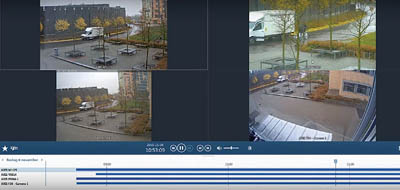 Axis: AXIS Camera Station
Axis: AXIS Camera Station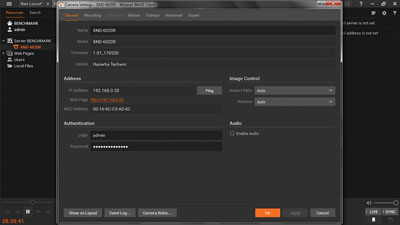 Hanwha Techwin: Wisenet Wave
Hanwha Techwin: Wisenet Wave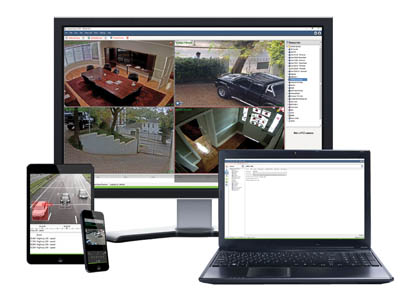 Cathexis: CathexisVision
Cathexis: CathexisVision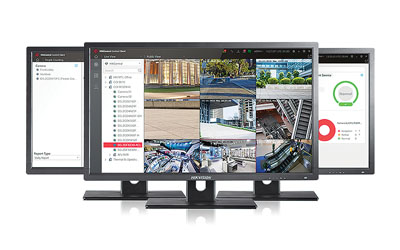 Hikvision HikCentral
Hikvision HikCentral